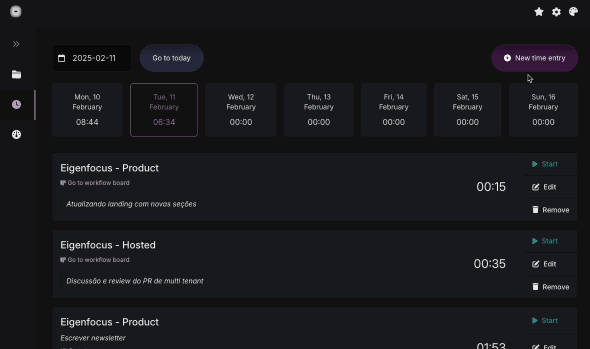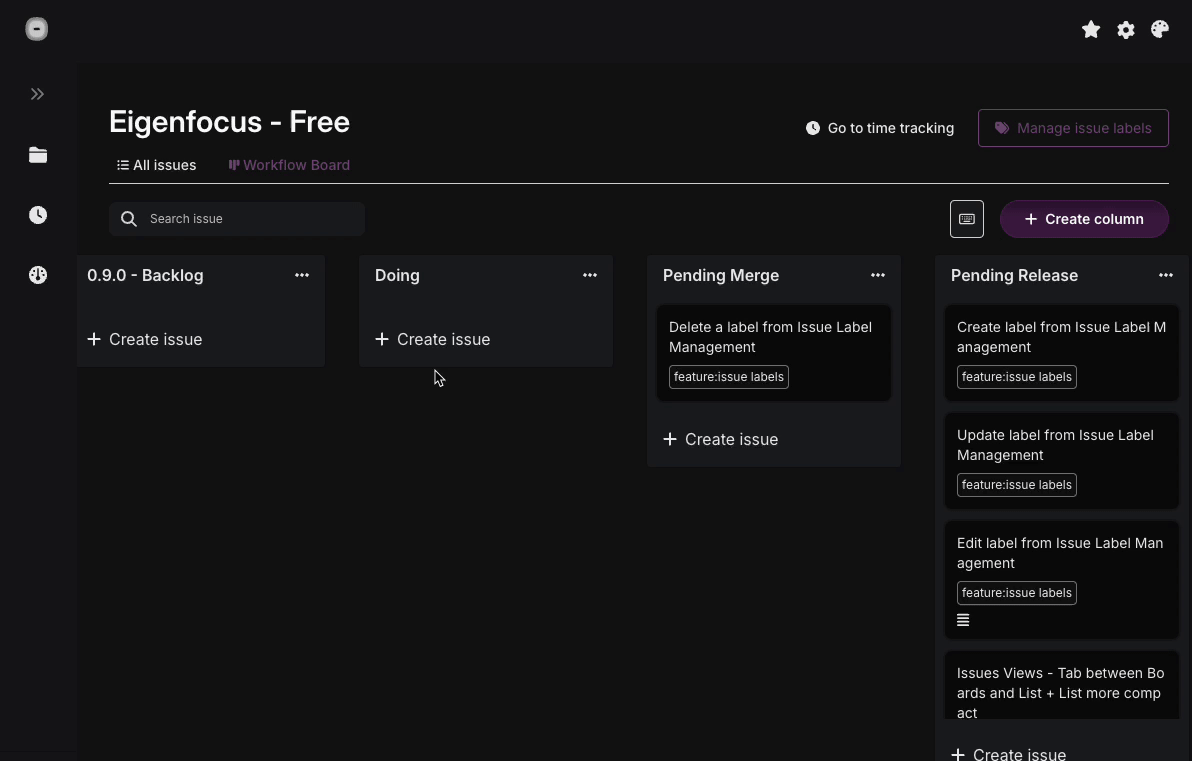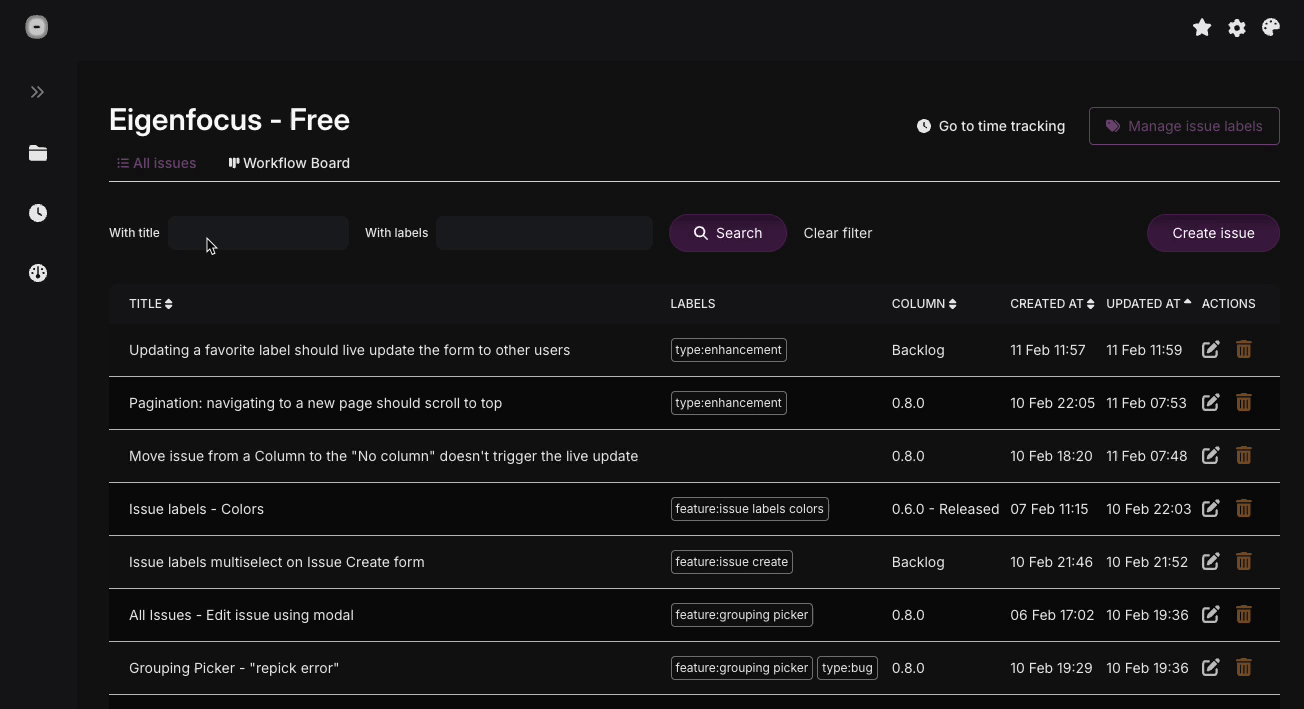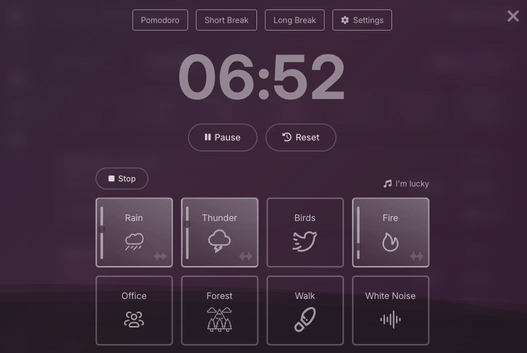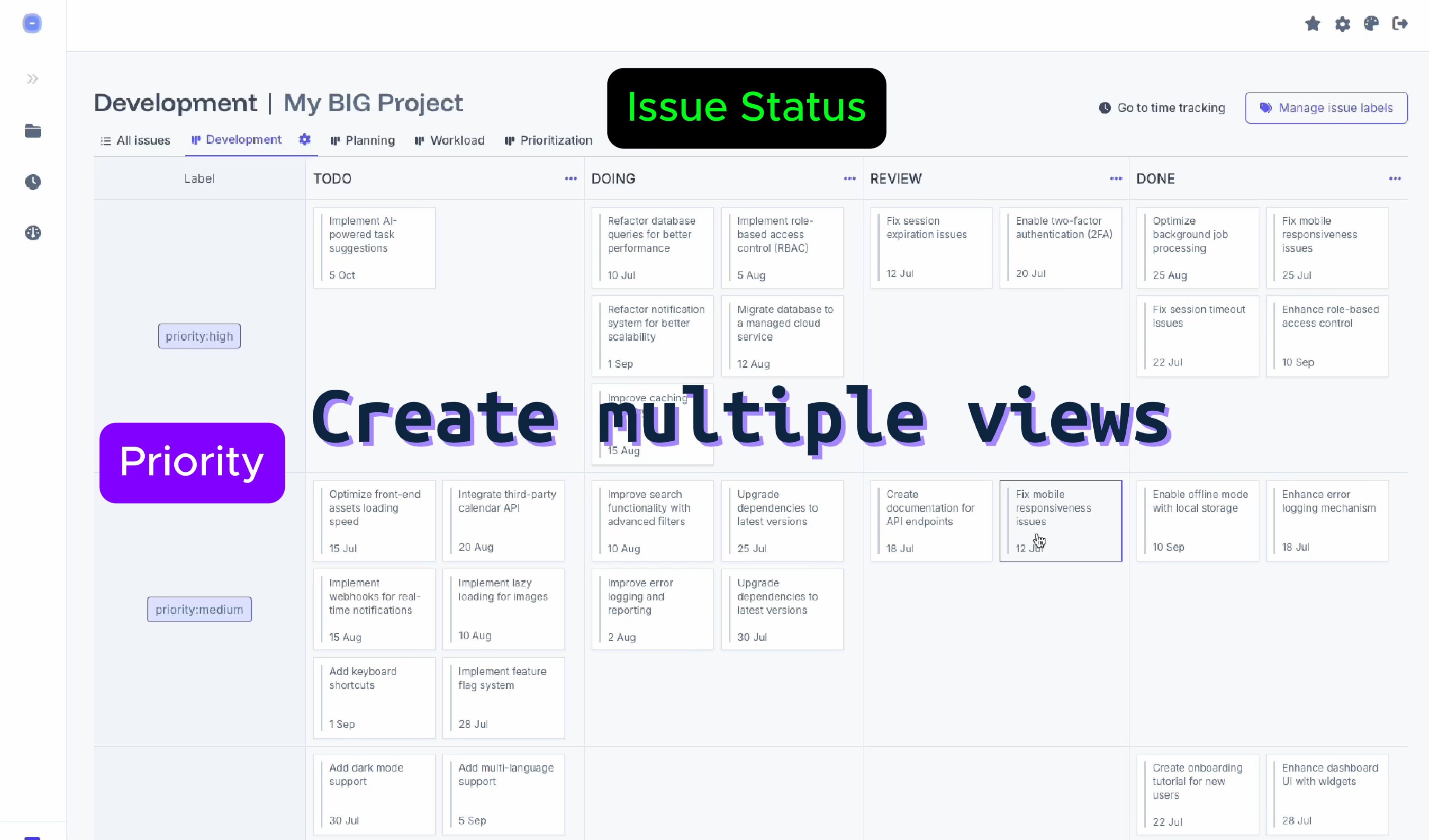We're building an All-In-One Self-Hosted solution to manage projects, time, teams and focus.
We've been working with product development for a while so this product is built on the wisdom, pain and scars that we've gathered over the years. Our philosophy is to create a tool that is both simple and versatile: effective for projects of all sizes, from solo projects to multi-member teams.
Any new ideas are welcome.
Here are some of our current features:
- Projects: create/edit/update/archive you projects
- Boards: each project has a board where you can customize columns to your workflow
- Issues: create issues, write markdown descriptions and attach files
- Workflow with Boards: Make changes to your boards and see changes in real-time
- Issue Labels and Shortcuts: Organize your issues and workflow with labels
- Time Tracking: track time spent on a Project and a Specific Issue
- Time Report: generate time reports by project and time periods
- Focus Space where you can setup
- Themes: customize the UI to your taste
We're building a PRO Edition (Paid) with advanced features for managing complex projects and larger teams.
Coming in the First Release:
- Multiple Users with Permission Control
- Custom Issue Statuses & Types
- Create Views with Pre-Saved Filters
- Highly customizable and multiple views (Boards and Grids)
You can run our project using our docker image directly with docker or docker compose:
docker run \
--restart unless-stopped \
-v ./app-data:/eigenfocus-app/app-data \
-p 3001:3000 \
-e DEFAULT_HOST_URL=http://localhost:3001 \
-d \
eigenfocus/eigenfocus:1.0.0-freeAnd access it at http://localhost:3001.
Or using a docker-compose.yml file:
services:
web:
image: eigenfocus/eigenfocus:1.0.0-free
restart: unless-stopped
volumes:
- ./app-data:/eigenfocus-app/app-data
environment:
- DEFAULT_HOST_URL=http://localhost:3001
ports:
- 3001:3000Then, run it with the CLI:
docker compose up -dAnd access it at http://localhost:3001.
DEFAULT_HOST_URL: URL that is going to be used to access your application.- Example: "http://localhost:3001", "http://mydomain.com" or "https://mydomain.com"
FORCE_SSL: Defaults tofalse. If set totrue, all incoming requests that are not HTTPS will be redirected to use HTTPS protocol.ASSUME_SSL_REVERSE_PROXY: Defaults tofalse. If set totrue, all incoming requests will be interpreted as HTTPS. This is useful for cases when you haveFORCE_SSLset totruebut are behind a reverse proxy that terminates the SSL. This means that our app will be receiving requests via HTTP. In order to avoid an infinite redirect loop to HTTPS you must setASSUME_SSL_REVERSE_PROXYtotrue. For more information, check the conversation and changelog on rails/rails#47139.
You can enable HTTP Basic Auth by setting these two env variables:
HTTP_AUTH_USER- For the usernameHTTP_AUTH_PASSWORD- For the password
➜ If you're exposing the service to the internet don't forget to setup a certificate and use HTTPS.
Check the README.md file for instructions on how to setup the project.
Feel free to contact us hi@eigenfocus.com or open an issue.
Thank you for your interest in contributing to the project.
Feel free to open an issue with any idea, suggestion or comment.
As we offer a paid version of Eigenfocus, we don't think it's fair to accept code contributions from other people so we're not accepting pull requests.
We're a free self-hosted project that you can use but we're not open source. Check our License.






